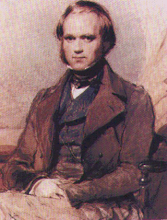
In North-Central Oregon, the John Day Fossil Beds record a succession of ecosystems over 57 million years from lush tropical jungle with crocodiles and palm trees to cooler and drier forests and grassland inhabited by horses and camels.
The dramatically shifting landscape evolved as tectonic plate collision along the nearby North American plate boundary gave rise to volcanic mountains along the west coast.
Some of the sedimentary layers at John Day are the deposits of massive mudflows generated by volcanic eruptions that engulfed entire forests. Other beds resemble those at Florissant in Wyoming—fossil lake deposits preserving fish, leaves, and insects.
Like Idaho’s Hagerman fossil beds, the youngest John Day beds preserve a pre-ice-age fauna, and the painted hills of the John Day beds recall the deeply weathered deposits of South Dakota’s Badlands.
Learn more about the John Day fossil beds here.
Illustration of the stratigraphic sequence is from here.
http://www.nps.gov/joda/naturescience/geologicformations.htm


No comments:
Post a Comment